- Home
- slideshows
- miscellaneous
- A timeline of the political crisis in Venezuela, which began with claims of election rigging and has the US calling for regime change
A timeline of the political crisis in Venezuela, which began with claims of election rigging and has the US calling for regime change
Socialist leader Hugo Chavez died in 2013, when his vice president Nicolas Maduro stepped in to take over. Chavez had been in charge for 14 years.

Soon after, shortages and crime ravaged the country. Anti-Maduro mass protests broke out, and 43 people died.
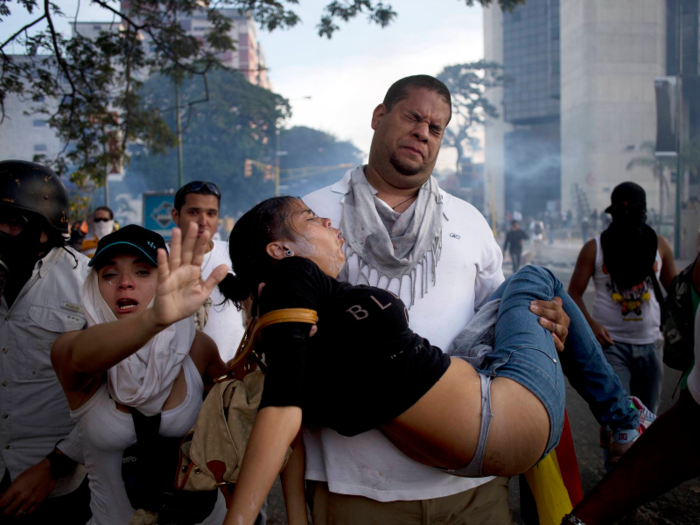
Leopoldo Lopez, the most prominent opposition leader, was charged for fomenting unrest in the 2014 protests. He spent three years in prison and is now under house arrest.
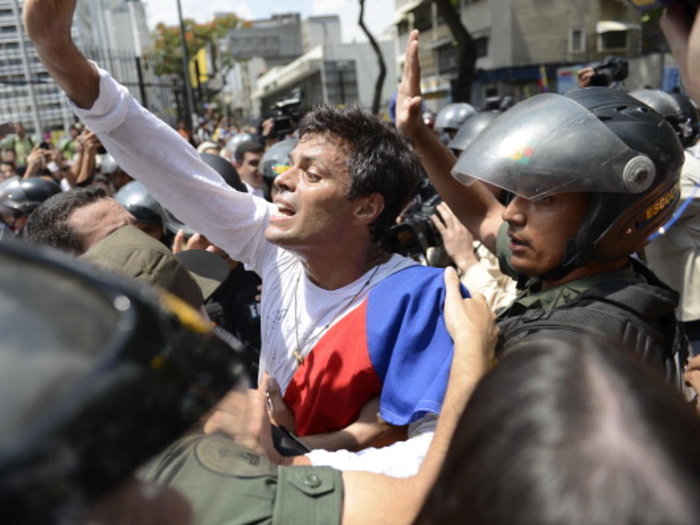
Source: Reuters
In December 2015, the opposition party won a majority of seats in the National Assembly for the first time since Chavez took power in 1999.
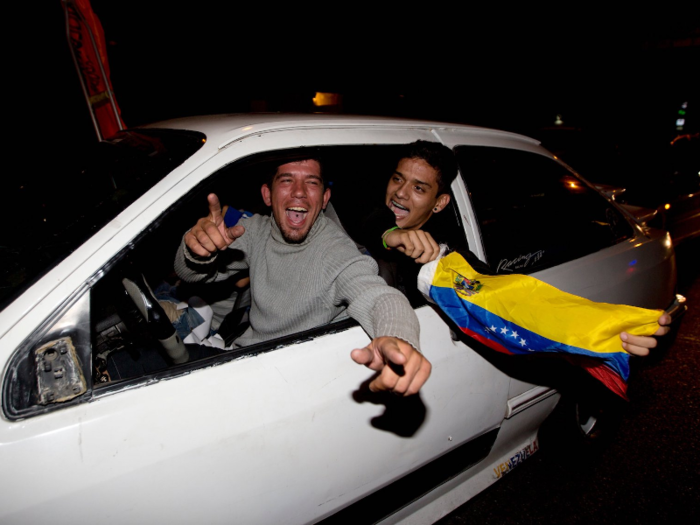
Source: PBS
As oil prices continued plummeting, the oil-dependent economy tanked, and the government could not afford to import many foods. Maduro declared a state of "economic emergency" in January 2016.
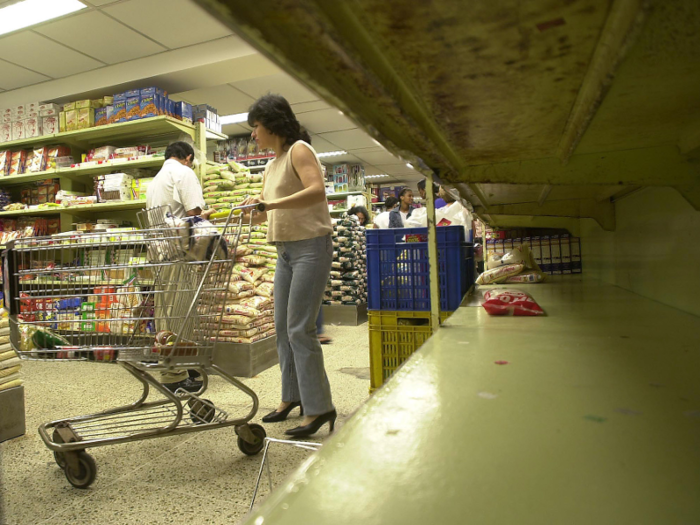
Source: CNN
Maduro's government faced significant protests in 2017 as it created the Constituent Assembly, which took over most important legislative functions. The Supreme Court also tried taking over the functions of the opposition-led National Assembly, but failed.
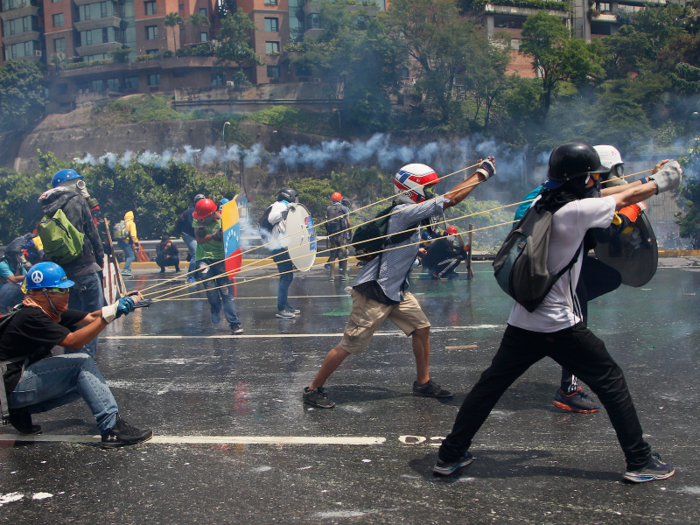
Source: Reuters
On January 5, 2019, the little-known lawmaker Juan Guaidó was appointed the head of the National Assembly, shorn of most of its power.
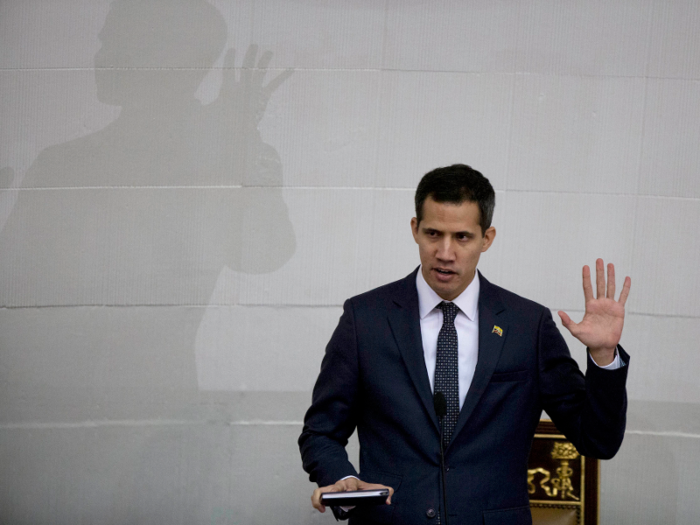
Source: Reuters
Just five days later, Maduro started a second presidential term. His election win was dogged by accusations of vote-rigging. Domestic opposition parties, the US, and 13 other countries in the Americas do not recognize the result.
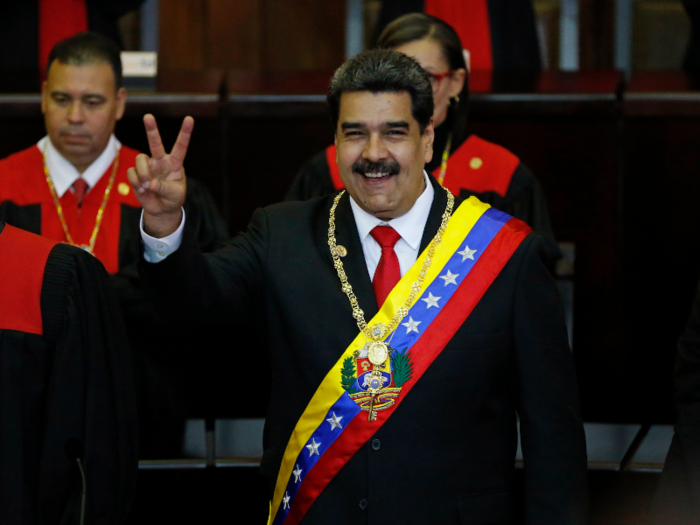
Source: BBC
Tens of thousands of people around the country staged protests saying that Maduro's presidency was unconstitutional and fraudulent, and told him to resign. They were met with pro-government rallies.
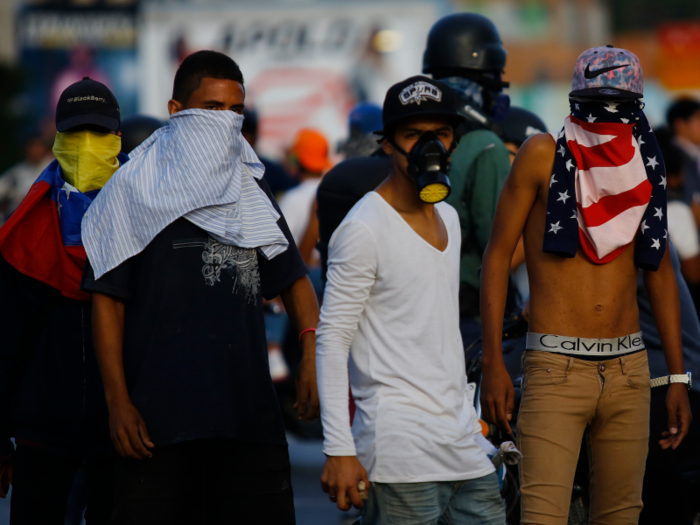
Sources: The Associated Press, CNN
On January 23, Guaidó declared himself Venezuela's interim president, on the basis that there is no legitimate president of Venezuela, and called for free elections.
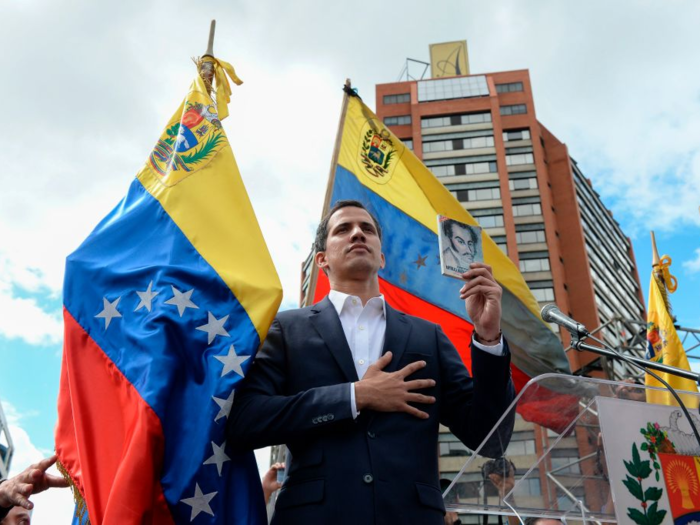
Source: The Associated Press
With opposition leader Lopez still under house arrest, Guaidó emerged as the new face of the anti-Maduro movement.
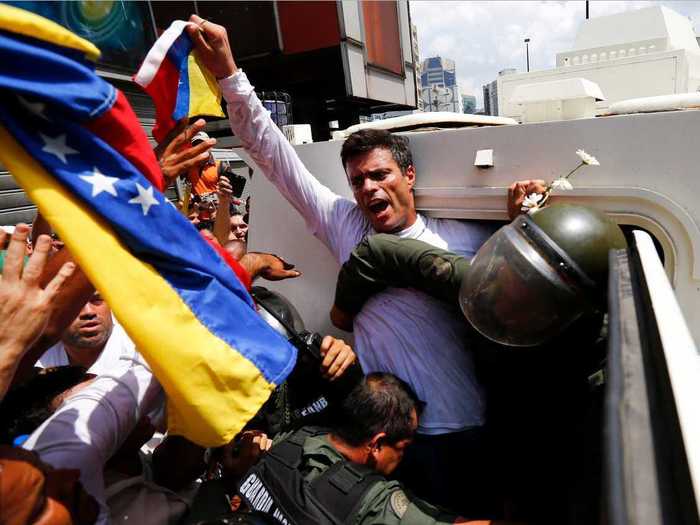
The US, Canada, and most Latin American nations immediately recognized Guaidó as interim president. Maduro severed diplomatic ties with the US in response.
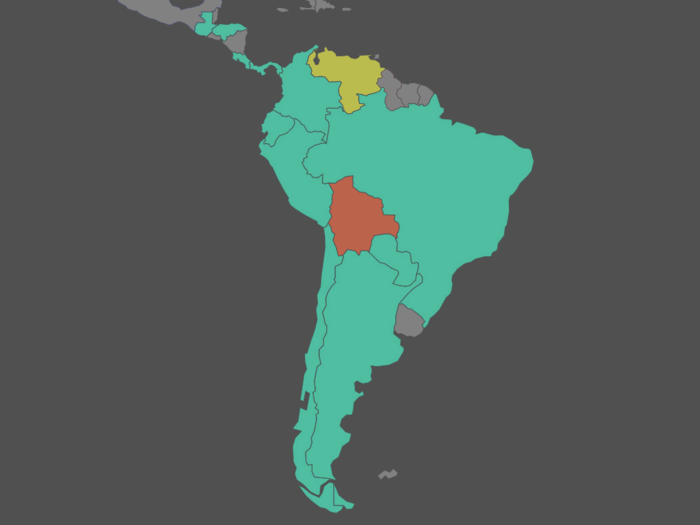
Guaidó began to urge soldiers, especially high-ranking ones, to join the opposition. The military is the backbone of Maduro's power, with generals holding important government positions. The national guard is frequently deployed against protesters.
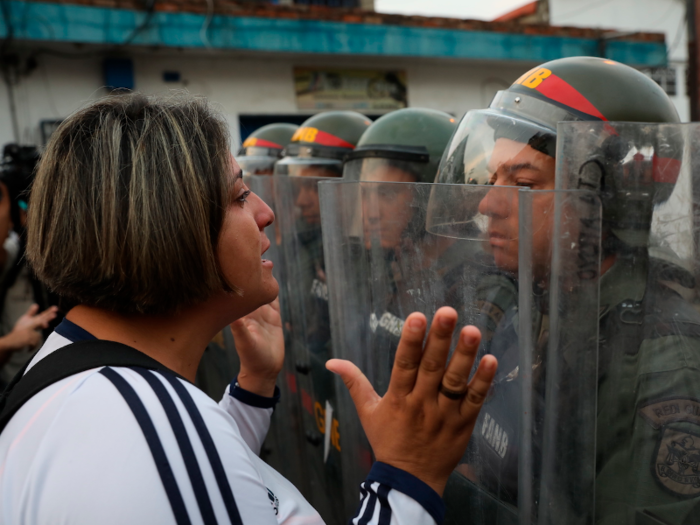
In an op-ed for The New York Times, Guaidó offered amnesty to everyone opposing Maduro's government, and members of the armed forces who haven't committed crimes against humanity.
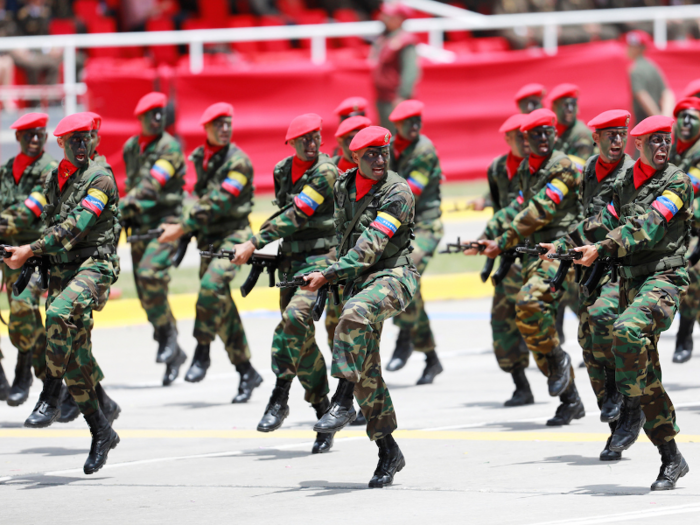
Many members of Venezuela's military — a solid power base for Maduro — are implicated in human rights abuses and drug trafficking, according to The Associated Press.
Source: The New York Times
Venezuela's Supreme Court imposed a travel ban for Guaidó and froze his assets on January 30, saying he is being investigated for "usurping" power.
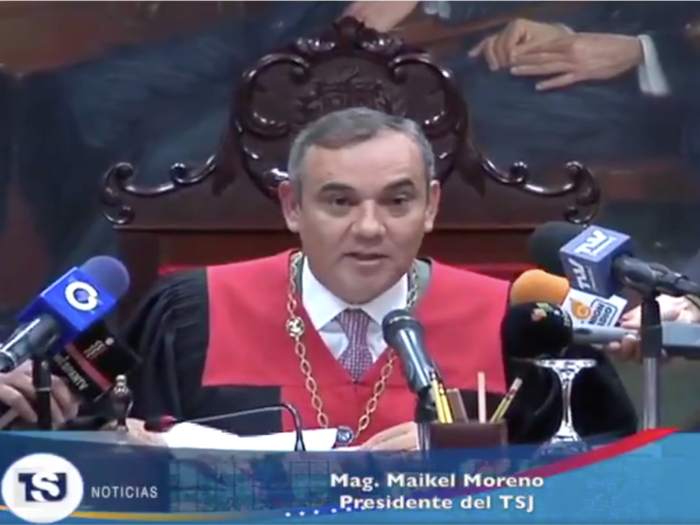
Source: El Pais
Some of Europe's most important nations, such as Germany, France, Britain, and Spain, backed Guaidó on February 4.
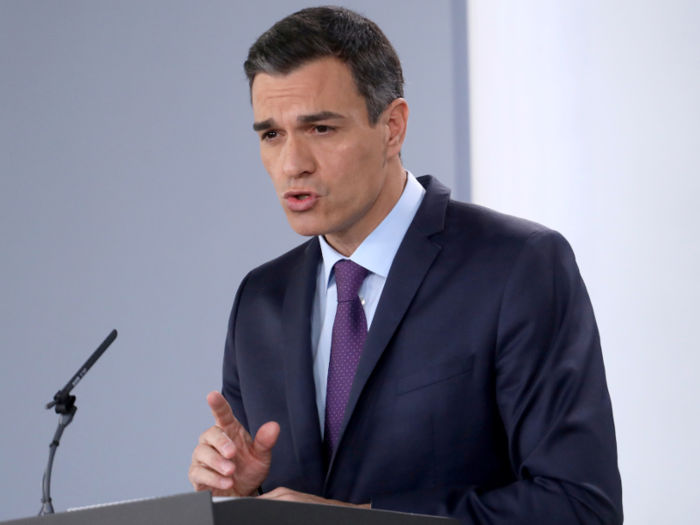
On February 22, Guaidó defied his travel ban. He left Venezuela to attend the "Venezuela Live Aid" concert in Colombia, organized by British billionaire Richard Branson.
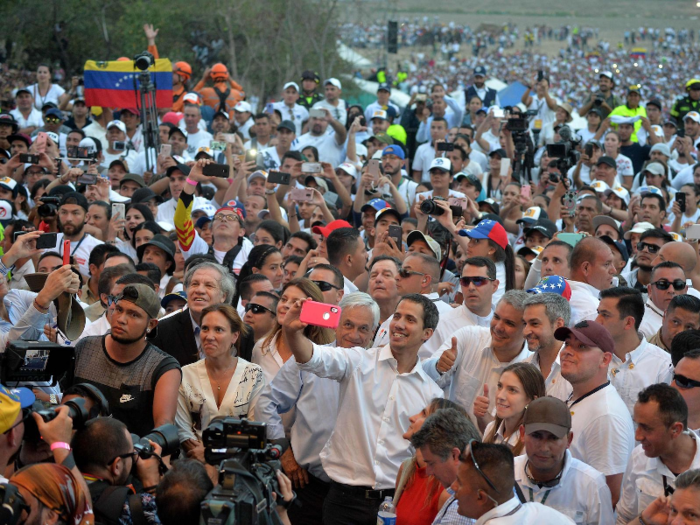
The following weekend, opposition supporters tried to bring in US-backed humanitarian aid over the Colombian and Brazilian borders, which the government closed. The armed forces barred their entry, killing two and injuring more than 300.
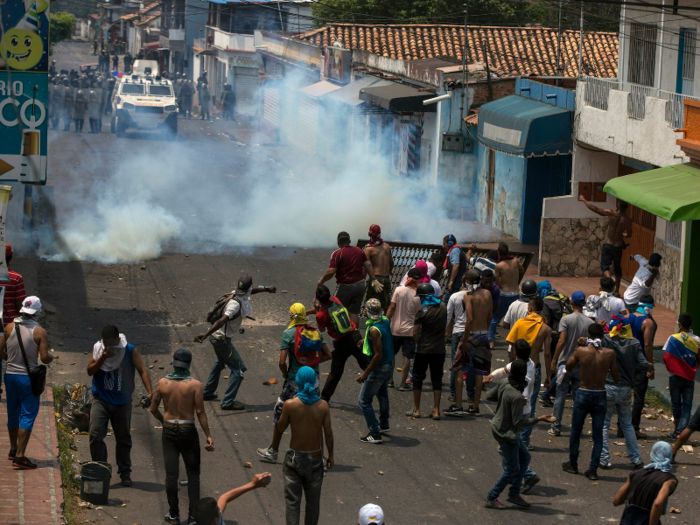
The Venezuelan government shut the country's bridge to Brazil on February 21, and to Colombia on February 23.
Source: The Associated Press
Read more: Photos show chaos in Venezuela as protesters and soldiers clash over humanitarian aid shipments
International leaders rejected the possibility of sending their militaries into Venezuela to take over control. Guaidó had tweeted that "all options are open" after Maduro barred US-backed aid to enter.
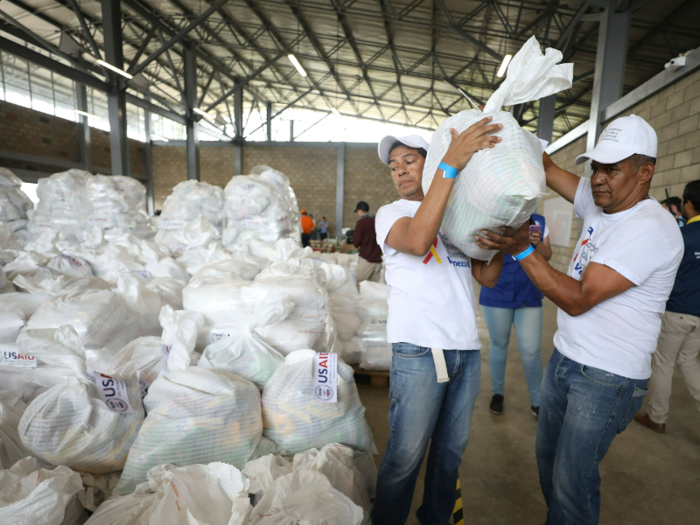
Source: Juan Guaidó/Twitter
Guaidó traveled around South America to meet world leaders who back him, including US Vice President Mike Pence and the presidents of Colombia, Brazil, Paraguay, Argentina and Ecuador.
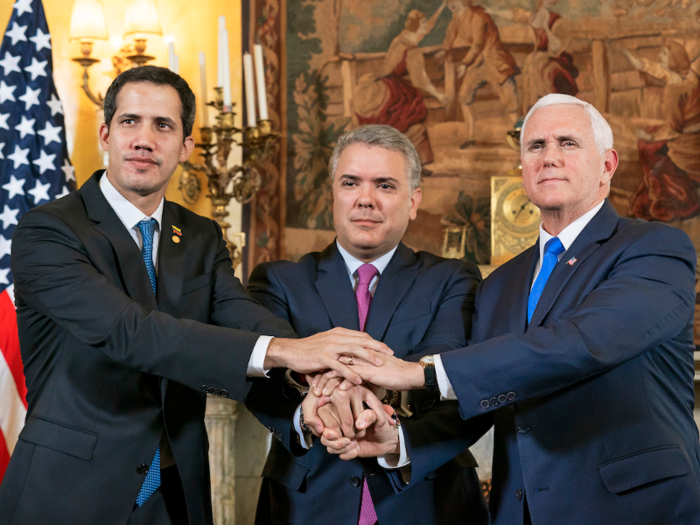
Source: Bloomberg
Guaidó announced Monday, March 4, as his definitive return date to Venezuela, risking arrest and imprisonment for going against the travel ban.
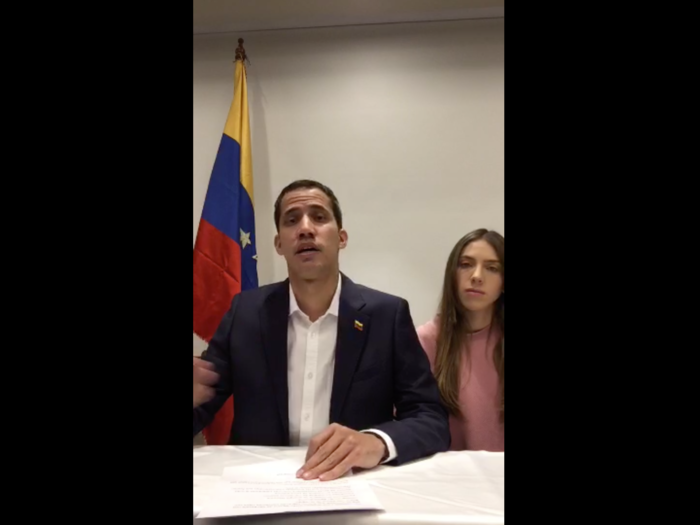
Guaidó arrived in Venezuela and passed through immigration on March 4, he said on Twitter. He was met by European diplomats.

Source: The Associated Press
Thousands of supporters welcomed him at a rally where he called for a new round of protests on Saturday, March 9.
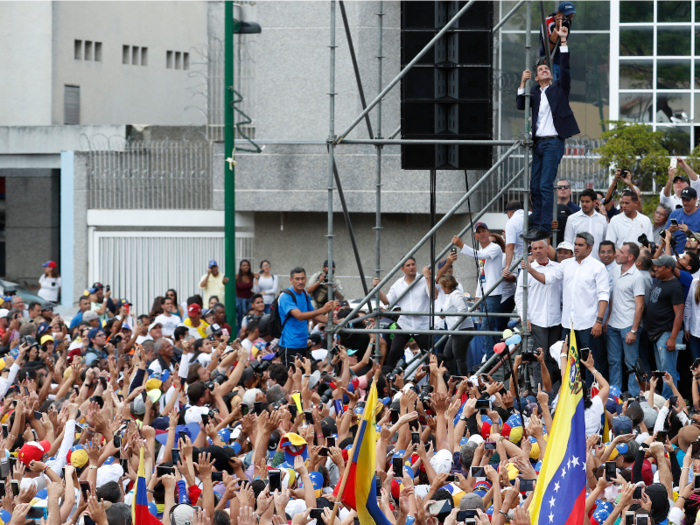
Source: The Associated Press
On March 5, Guaidó met with unions to win their support, he tweeted. He is planning to organize a public sector strike, but the details have yet to be confirmed. On the same day, Maduro announced an "anti-imperialist" march to rival Guaidó's on Saturday.
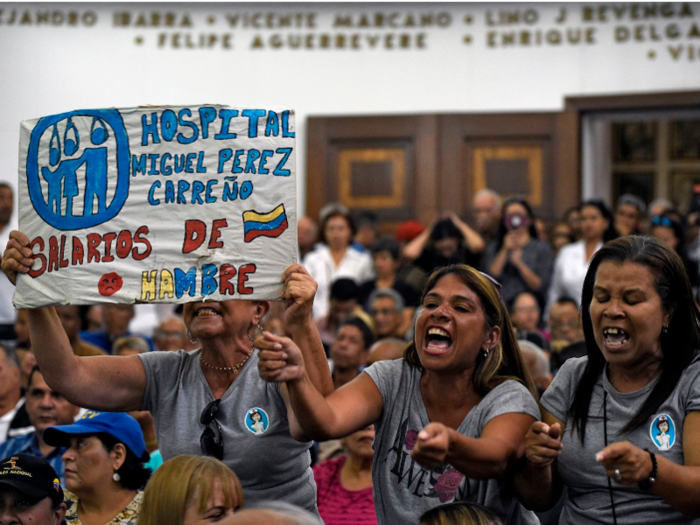
Source: Reuters
Popular Right Now
Popular Keywords
Advertisement